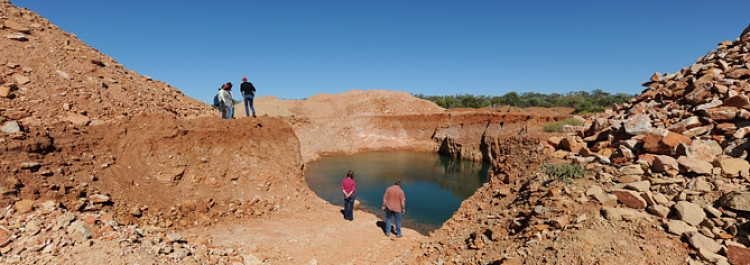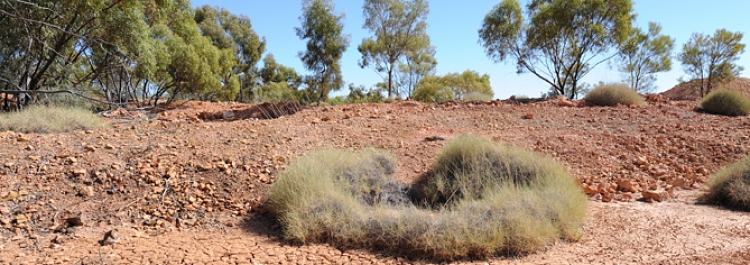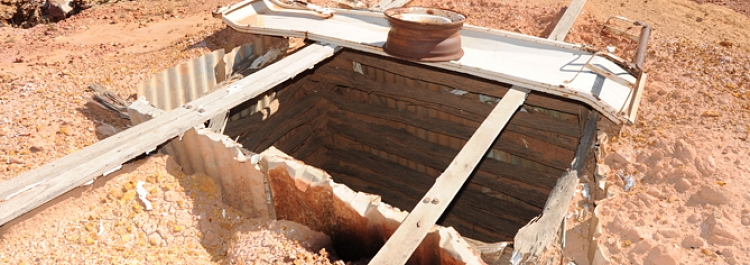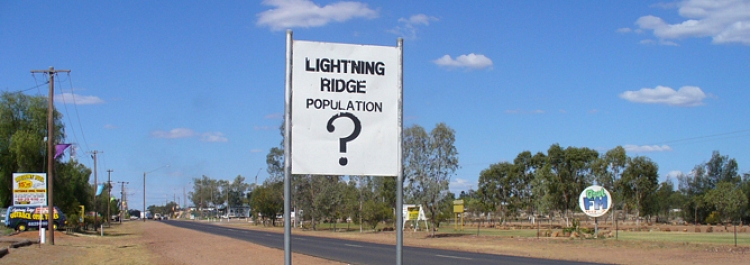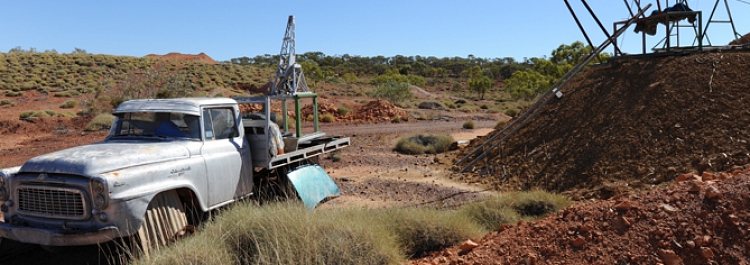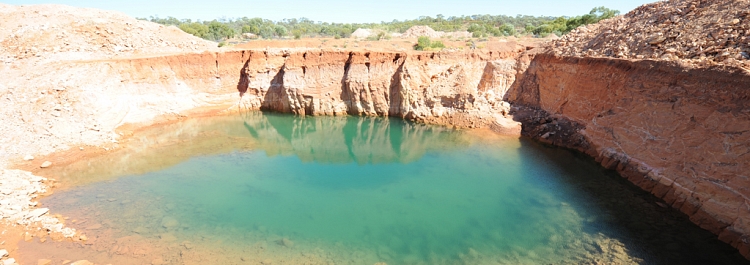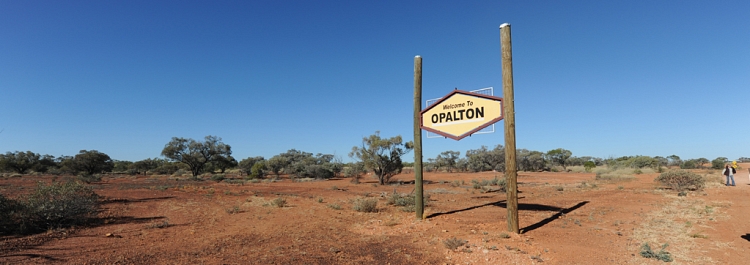The Australian Opal Fields
The major outcrops of opal in Australia occur along the shoreline of what was once The Great Inland Sea. The new Australian discoveries created great world interest in opal. Pioneers like Tullie Wollaston and E.F. Murphy helped develop these fields by marketing opal internationally and inspiring many to try their luck at mining. Miners worked and died in the harsh outback in the hope of making their fortune.
The important opal mining areas in Australian opal production over the last century have been White Cliffs, The Queensland Fields, Lightning Ridge, Grawin & Glengarry, Coober Pedy, Andamooka, Mintabie and Lambina.
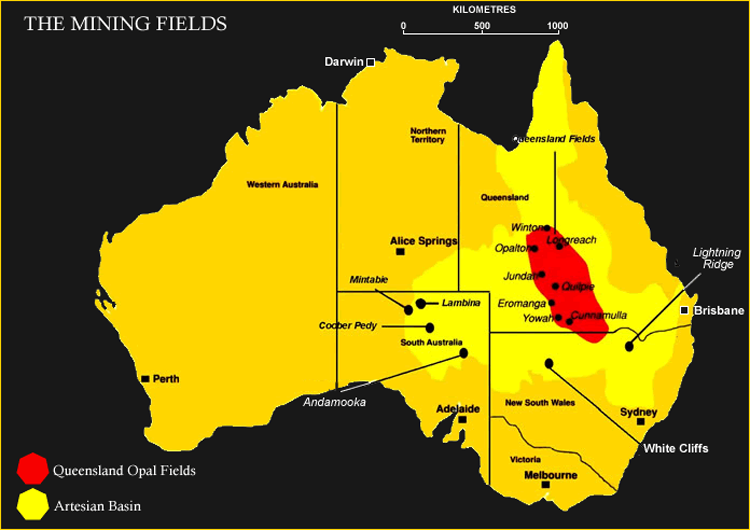
White Cliffs
Commercial mining commenced in the late 1880's at the White Cliffs Field in New South Wales. The opal mined here excited the world and the town soon developed, by the 1920's it had a population of more than 3,000. White Cliffs produced fine quality seam material in such volumes the world had not previously seen. Sadly, the main run was worked out by 1930 and the field all but died out.
Queensland fields
The Queensland fields are spread across 1,000km and produce almost all the world 's supply of boulder opal. This opal is produced from scattered locations in the vicinity of Yowah, Eromanga, Quilpie, Jundah, Opalton and Winton.
Almost all the opal is won by open cutting. Large and small ironstone boulders are split in the search for that illusive opal vein.
Lightning Ridge
This field was discovered in 1905 by kangaroo shooters. The 'Ridge produces almost all of Australia's sensational black opals and today despite a recent decline in production it is still the largest producer of opal by value. In the late 1980's the Corcoran field 30 km to the west of the township produced stunning black opal in great quantities. The population soared to over 8,000 people. At this time opal sold for record prices sometimes at more per carat than good quality diamond. Lightning Ridge opal is typically found as nodules or "nobbies". Grawin & Glengarry, The outlying areas of Grawin, Glengarry, Sheepyards, and Mulga Rush predominantly produce opals in seams.
Andamooka
Andamooka is in the harsh desert and located near the edge of Lake Eyre. It was discovered in 1935 and is famous for producing brilliant crystal seam opal. It reached its peak in the 1960's when the population reached 3,000. Unfortunately this field is worked out with very little commercial production since the 1970's. Today much of Andamooka's population is employed at the nearby uranium mines of Roxby Downs.
Coober Pedy
The bulk of the Worlds' light seam opal was mined at Coober Pedy. Mining extended over an area 50 kilometres long, running approximately north south. It was here that Andrew Cody's opal affair commenced: as a 12-year old school boy on a school excursion. In 1964 opal miners found it difficult to sell lower grades and often threw the opal away in disgust. Walking down Coober Pedy's main Street he filled his pockets with this opal, took them back to Melbourne and made a tidy sum!
The town reached its peak in the 1970's when enormous quantities of opal were being produced and world demand was high. Illegal gambling joints were prolific-some with dozens of tables and thousands of dollars changing hands. This dusty hot outback town is home to over 4,000 people representing more than 50 Nations. Unbearable summer temperatures have resulted in most living underground in "dugouts". In 2002 Coober Pedy's production has fallen to 25% of its heyday.
Mintabie
The fortunes of Mintabie came and went within a decade. In 1978 a group from Coober Pedy found nice quality black opal. Within a few years the population grew to 1500. Large powerful equipment was needed to rip the hard sandstone. More than 75 large bulldozers and many scrapers, excavators, etc quickly mined out this very rich outcrop. Mintabie produced fine quality light and black seam opal. This material was extremely hard, some able to scratch agate! Today there is only very limited mining activity.
Lambina
This field grew quickly when a scheme of arrangement was agreed the farming landholder in 2002. Around 300 miners worked the fields producing opal at comparatively shallow levels. Sadly today there is little production from this area.




